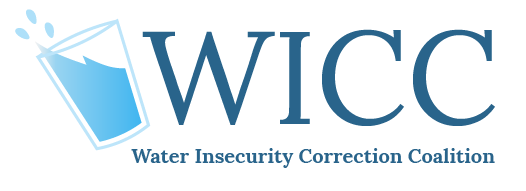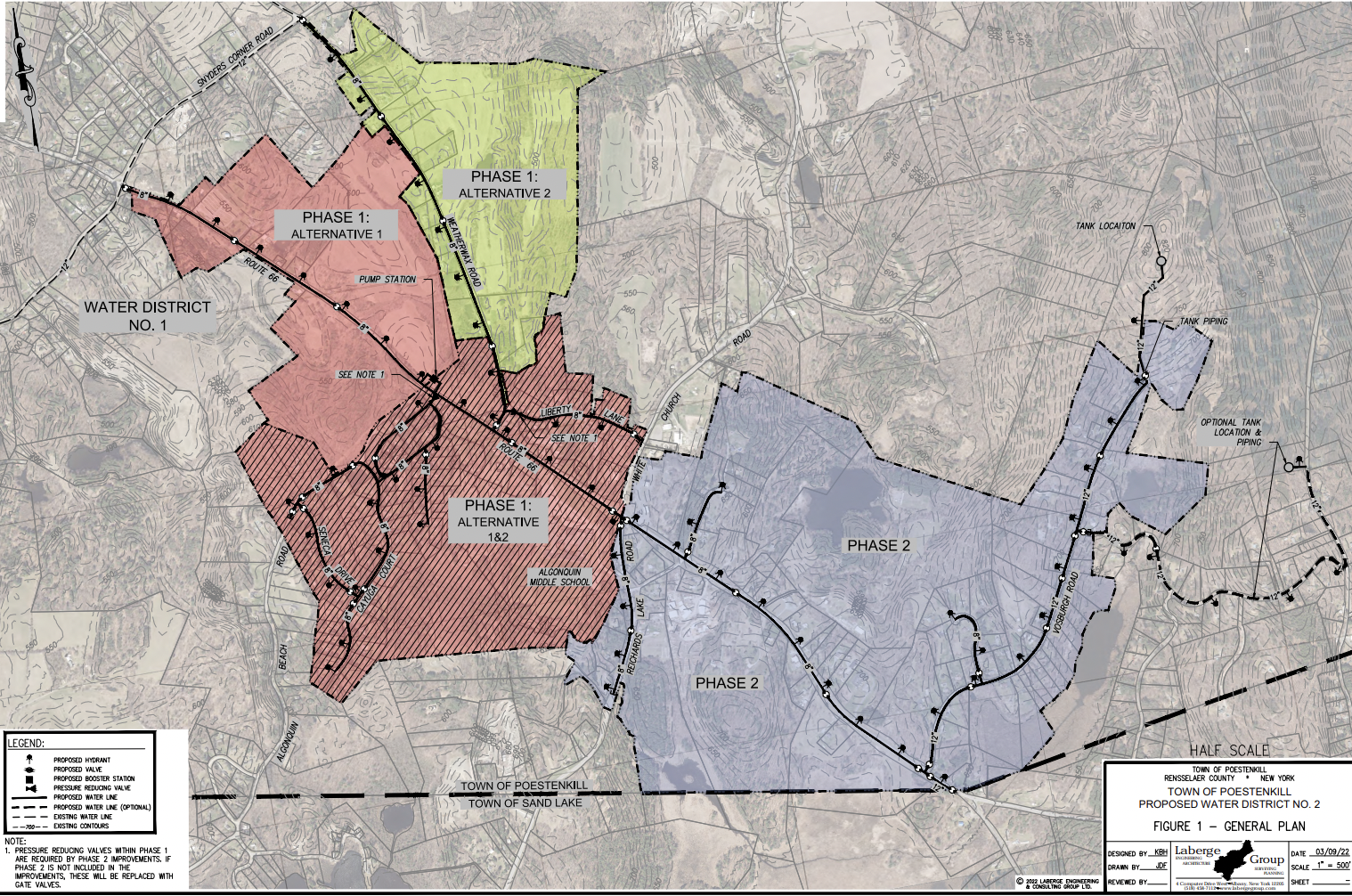POESTENKILL, NY – The Town Board held a well-attended public hearing on the proposed water district in Poestenkill yesterday. Residents heard from the Laberge Group, the consulting agency that put together the proposed plan, before having the opportunity to raise concerns to the Board.
Terri-Lee Jacangelo, a resident who lives on Seneca Drive, expressed frustration with how long it has taken to propose a solution to the PFAS problem, given it has been two years since the contaminant was first found in Algonquin Middle School’s water supply. “We don’t have final [cost] numbers out… is [the water district] going to go to the citizens to vote on?”
Greg Pattenaude spoke on behalf of the Concerned Citizens for Clean Water, telling the Board that “we believe clean water is important,” but emphasized that the “overhead does seem excessive.” Pattenaude also brought up that over $200k of federal pandemic funding has been untouched by the Town which could be used to help finance the project. According to Laberge, the project is estimated to cost $5.55 million.
The Board has acquired significant grant funding to cover most of the costs, including $670k from the Bipartisan Infrastructure Law Grant and over $3.3 million predicted in formula funding from the NYS Water Infrastructure Improvement Grant, which leaves $952,300 remaining to be paid for by the town. The Town of Poestenkill would have to take out a loan to pay for this, and residents within Water District 2 would be responsible for $405 per household every year.
Residents would also of course have to pay for the water they use on top of debt service payments. Laberge estimated that the average household would use 73,000 gallons a year, which at the current water district rate would incur about $420 per home.
With an estimated $140 for operation and maintenance costs, the total price per home would be $965 a year. If Congressional funding came through in November, that cost would be reduced to about $600 per household. In addition, homeowners would be responsible for the one-time cost of connecting the service line to their homes, a cost that Laberge’s proposal didn’t estimate.
The price tag of the switch from well water to public water seemed to be a chief concern for those residing within the proposed district. Resident Paul Plante emphasized that once “the district is formed, then the cost of engineering shifts to us… I’m a disabled veteran on a fixed income.”
“Don’t put it out to a vote until the cost is significantly clarified,” said Dominic Jacangelo, former Town Supervisor and the construction supervisor for Poestenkill’s first water district. The cost of the project is currently contingent on Congressional assistance that has not yet been solidified.
Jacangelo also pointed out that the construction of Poestenkill’s first water district took less than a year. “Construction is really fast. It’s so important to make sure everything is in place before we do that.” If the Board moves forward with the proposed district, they say construction would commence this summer with the aim of completing it by December 2024.
Water for the new district would be sourced from the City of Troy, which gets its water from the Tomhannock Reservoir. The Reservoir has been considered as an alternative clean water source for a PFAS-contaminated town before: Hoosick Falls considered connecting to the Tomhannock back in 2021 to mitigate their own PFOA contamination crisis. This was the last time PFAS testing was completed at the Reservoir, where surface water samples found PFOS below 1 part per trillion (ppt) and PFOA below 2 ppt, which are relatively safe levels according to EPA’s proposed measures.
Though the Board tabled the public hearing after all residents had a chance to speak, Supervisor Keith Hammond made a note to say that the hearing will be “ongoing” so residents have a continuous chance to talk and ask questions about the district as the process endures. Hammond said that residents would be invited to speak again after next week’s public discussion on the state’s final report on PFAS contamination in the town.
It may be beneficial to conduct surface water sampling at Tomhannock Reservoir before a decision on the water district is made to confirm that it would be the alternative with the least amount of risk to PFAS contamination for Poestenkill households that would rely on it.
The reason for the new water district is Poestenkill’s extensive drinking water contamination from chemicals called PFAS – per and polyfluoroalkyl substances – also known as “forever chemicals” due to their lingering properties in blood and concerning health risks. The New York State Department of Environmental Conservation (DEC) and Department of Health (DOH) investigated potential sites of contamination over the last two years and recently released a report detailing their findings.
Poestenkill residents are urged to attend the open house-style event put on by the DEC and DOH to discuss the findings of the report. The event is Thursday, May 18th at the Algonquin Middle School cafeteria, and residents can attend anytime between 5:00 and 8:00 PM.
The Water Insecurity Correction Coalition (WICC), through its Upstate Water Contamination Project, has been working with and for residents of Poestenkill to provide education on the PFAS problem and hopefully find and advocate for the best solution to the contamination of drinking water supplies. WICC is a youth-led 501c3 nonprofit based in New York State.
OTHER RESOURCES
Laberge’s Public Hearing Presentation
Public Hearing Informational Handout
“Proposed $5.5 million water district for Poestenkill” by James De La Fuente, NEWS10 ABC.




